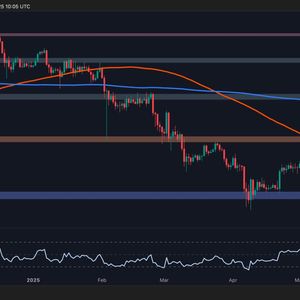BitcoinWorld Santander Crypto Ambition: Banking Giant Explores Stablecoins Signaling Major Shift The world of traditional finance continues its cautious yet undeniable march into the digital asset space. The latest development sparking discussion comes from Spain, where banking behemoth Santander is reportedly exploring a potential entry into the cryptocurrency market. According to insights shared by ‘Unfolded’ on the social media platform X, the initial focus of this exploration centers on early-stage plans for a stablecoin. This move by a major global bank like Santander underscores the growing trend of Santander crypto interest within established financial institutions. Why Are Giants Like Santander Eyeing Banking Stablecoins? Santander isn’t operating in a vacuum. Its reported interest in stablecoins reflects a broader trend across the financial industry. Banks and financial institutions are recognizing the potential efficiencies and new opportunities that digital assets, particularly stablecoins, can offer. But why the sudden (or perhaps not so sudden) pivot? Efficiency in Payments and Settlements: Traditional cross-border payments can be slow, expensive, and involve multiple intermediaries. Stablecoins operating on blockchain technology offer the potential for near-instantaneous, 24/7 settlements at significantly lower costs. This is particularly attractive for corporate banking and interbank transfers. Exploring Tokenized Assets: Beyond simple payments, stablecoins can serve as the foundational layer for trading and settling other tokenized assets, such as real estate, securities, or commodities, on a blockchain. Banks want to be at the forefront of this potential revolution in asset management and trading. Meeting Evolving Customer Needs: Corporate clients, especially those involved in international trade or digital businesses, are increasingly looking for faster and more flexible payment solutions. Stablecoins could provide a digital-native answer to these demands. Staying Competitive: The rise of FinTech companies and dedicated crypto platforms offering digital asset services is pressuring traditional banks to innovate. Ignoring the digital asset space is no longer a viable long-term strategy. Anticipating Regulatory Shifts: While the regulatory landscape for stablecoins and other digital assets is still evolving, banks are positioning themselves to be ready when clearer frameworks emerge. Developing internal expertise and pilot programs now is crucial for future compliance and market participation. The exploration of banking stablecoins by institutions like Santander signals a strategic move to adapt to a changing financial ecosystem. It’s not just about dipping toes; it’s about understanding how digital value transfer can integrate with existing financial infrastructure. What Could a Santander Bank Digital Currency Look Like? While details are scarce, a stablecoin issued or utilized by a major bank like Santander would likely differ in significant ways from the stablecoins most commonly used in the public crypto market (like USDT or USDC). Here are some potential characteristics: A Santander stablecoin would likely be: Fiat-Backed 1:1: Pegged directly to a major fiat currency like the Euro or potentially the US Dollar, with reserves held by the bank itself, ensuring stability. Permissioned or Enterprise-Focused: Initially, it might not be a public stablecoin accessible to everyone. Instead, it could operate on a permissioned blockchain network, limited to verified institutional clients or used internally for interbank settlements. Regulatory Compliant: Designed from the ground up to adhere to strict Know Your Customer (KYC) and Anti-Money Laundering (AML) regulations, as required by traditional banking standards. Use Case Specific: Focused initially on specific applications like cross-border payments, corporate treasury management, or the settlement of tokenized securities, rather than broad retail adoption. This approach allows banks to explore the technology in a controlled environment, mitigating some of the risks associated with public, permissionless networks while adhering to their regulatory obligations. The concept of a bank digital currency , whether a stablecoin or a direct digital representation of liabilities, is becoming a key area of focus. Benefits of Institutional Crypto Adoption for the Financial System The potential entry of major players like Santander into the crypto space through initiatives like stablecoins carries significant implications, not just for the bank itself, but for the broader financial system and the digital asset market. This trend of institutional crypto adoption offers several potential benefits: For Banks and Institutions: Operational Efficiency: Reduced costs and time for transactions, especially cross-border. New Revenue Streams: Potential for offering new digital asset services, custody, and facilitating tokenized markets. Enhanced Risk Management: Potential for real-time settlement reduces counterparty risk in certain transactions. Innovation and Future-Proofing: Staying relevant in a rapidly digitizing global economy. For the Crypto Market: Increased Legitimacy: Participation from regulated financial giants lends credibility to the digital asset space. Potential for Increased Liquidity: As institutions engage, they can bring significant capital and trading volume. Development of Robust Infrastructure: Institutional needs drive the development of more secure, scalable, and compliant digital asset infrastructure. For Users (eventually): Faster, Cheaper Transactions: While initial focus might be institutional, the underlying technology improvements could eventually benefit retail users. New Financial Products: Access to tokenized assets and other digital-native financial services. This evolution signifies a maturation of the digital asset space, moving beyond speculative retail trading towards integration into core financial functions. Navigating the Hurdles: Challenges of Stablecoin Regulation and Adoption While the potential is clear, the path for banks entering the crypto space, particularly with stablecoins, is fraught with challenges. The primary hurdle remains stablecoin regulation . Here’s a look at some key challenges: Challenge Description Implication for Banks Regulatory Uncertainty Lack of clear, harmonized global or even regional rules specifically for stablecoins and digital assets held by regulated entities. Creates legal and compliance risks, hinders development and deployment. Technical Integration Integrating new blockchain technology with complex, often legacy, banking systems. Requires significant investment, expertise, and presents operational challenges. Security Risks Threats of hacking, smart contract vulnerabilities, and cyberattacks targeting digital asset infrastructure. Requires robust security protocols and constant vigilance to protect assets and data. Competition Competing with existing public stablecoins, other banks developing similar solutions, and potential Central Bank Digital Currencies (CBDCs). Requires a strong value proposition and efficient execution to gain market share. Public Perception Addressing concerns about volatility (even for stablecoins, perceived risk), scams, and the association of crypto with illicit activities. Requires clear communication and building trust with clients and the public. Overcoming these challenges requires close collaboration between banks, regulators, and technology providers. The success of initiatives like Santander’s potential stablecoin will heavily depend on navigating this complex landscape. Examples of Institutional Crypto Adoption Beyond Santander Santander’s exploration is part of a larger trend. Several other major financial institutions have already taken steps into the digital asset space, providing a roadmap and context for Santander’s potential move: JPMorgan Chase: Launched JPM Coin, a private, permissioned blockchain-based system for wholesale payments between institutional clients. This is a prime example of a bank-issued digital currency for specific use cases. DBS Bank (Singapore): Established a digital asset exchange, allowing institutional and accredited investors to trade cryptocurrencies and eventually tokenized assets. Goldman Sachs: Has been active in cryptocurrency trading and exploring tokenization of traditional financial assets. Various Banks in Pilot Programs: Many banks globally are participating in pilot programs exploring blockchain technology for interbank settlements, trade finance, and other applications, often involving forms of digital tokens or stablecoins. These examples demonstrate that institutional crypto adoption is not just theoretical; it’s actively happening. Banks are exploring different angles, from direct trading and custody to issuing their own digital currencies for specific purposes. Santander’s focus on stablecoins aligns with the payment and settlement efficiency angle pursued by many. Actionable Insights: What Does This Mean for You? While Santander’s initial stablecoin plans are likely focused on institutional use, developments like this have broader implications for the financial world and anyone interested in crypto: Watch for Regulatory Clarity: Increased institutional involvement puts more pressure on regulators to provide clear rules. Keep an eye on regulatory announcements in major financial hubs. Clearer rules could accelerate adoption. Observe Use Case Development: Pay attention to how banks like Santander plan to use stablecoins. Will it be limited to internal transfers, or will it extend to corporate payments, trade finance, or even facilitating tokenized asset trading? Understand the Difference: Recognize that a bank-issued stablecoin might operate differently (e.g., permissioned network, strict KYC) than public stablecoins you might use on a crypto exchange. Institutional Flow Matters: As more institutions engage, it can potentially bring more stability and volume to certain parts of the crypto market, particularly those related to infrastructure and regulated digital assets. The Future of Finance is Hybrid: Santander’s move reinforces the idea that the future financial system will likely be a hybrid, integrating traditional finance with elements of decentralized or distributed ledger technology. Santander’s reported exploration is a signal that major banks see a future where digital assets play a role. It’s a development worth following closely. Conclusion: Santander’s Stablecoin Step and the Future of Banking Santander’s early-stage exploration into the crypto market, specifically focusing on stablecoins, is a significant indicator of the direction traditional finance is heading. It’s not an isolated event but rather part of a larger wave of institutional crypto adoption as banks seek to leverage the potential efficiencies and opportunities presented by digital assets. While challenges, particularly around stablecoin regulation and technical integration, remain substantial, the strategic imperative for banks to innovate in the digital realm is clear. Whether Santander’s plans fully materialize and how their potential bank digital currency is implemented will be key developments to watch. What is certain is that the lines between traditional banking and the digital asset world are increasingly blurring, promising a more integrated and potentially more efficient financial future. To learn more about the latest crypto market trends, explore our articles on key developments shaping institutional crypto adoption and banking stablecoins . This post Santander Crypto Ambition: Banking Giant Explores Stablecoins Signaling Major Shift first appeared on BitcoinWorld and is written by Editorial Team


















